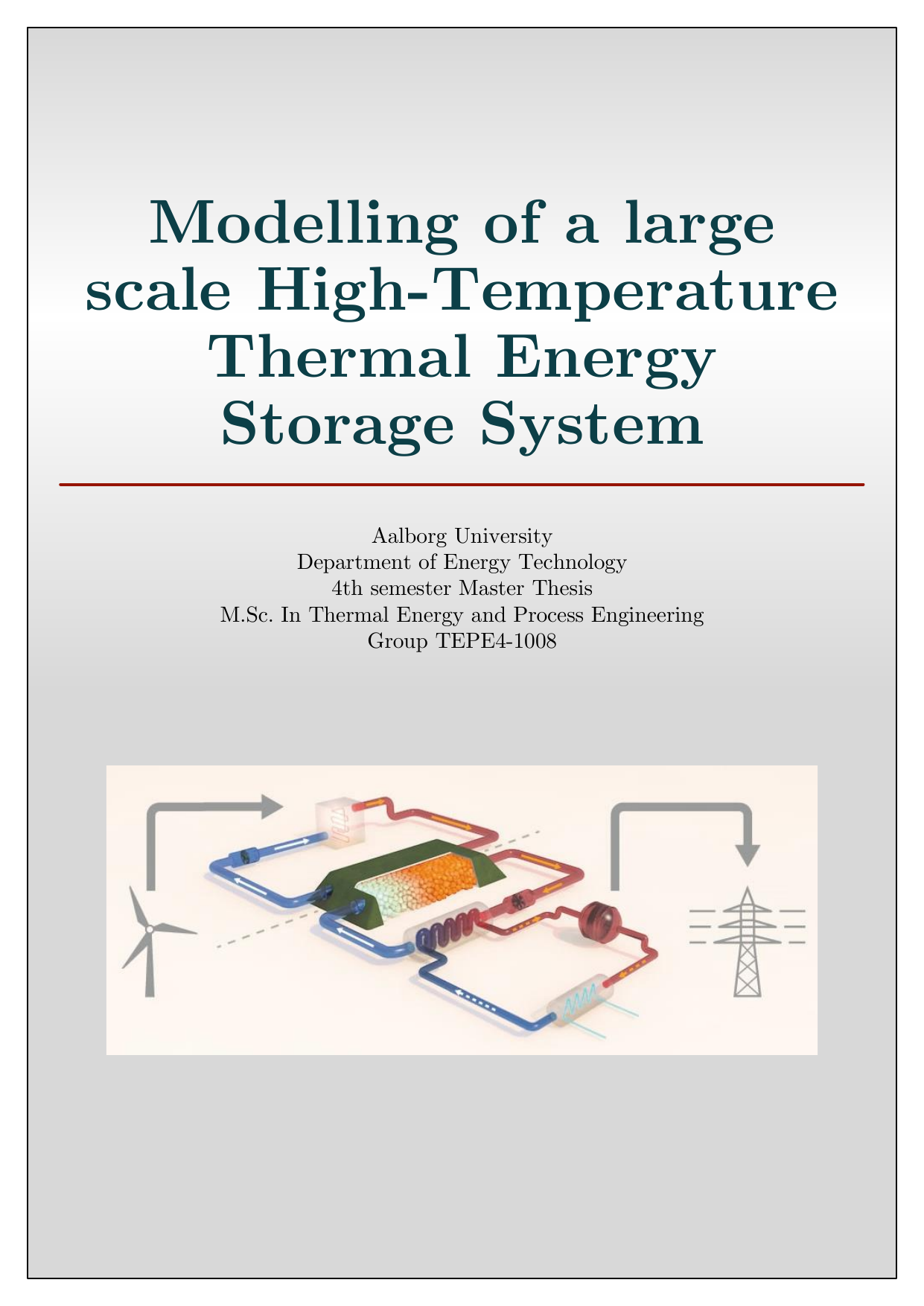
Modelling of a large scale High-Temperature Thermal Energy Storage System
Authors
Term
4. term
Education
Publication year
2017
Submitted on
2017-06-01
Pages
111
Abstract
The share of the Danish energy demand covered by renewables has increased steadily since the 1990's. Because of this, energy storage is becoming a more viable solution for peak shaving and a key component for transitioning to renewable power generation. Thermal Energy Storage (TES) utilises a packed bed of rocks to store high temperature thermal energy originating from fluctuating sources such as wind power. When needed, heat is extracted and converted to electricity using a steam Rankine cycle. A TES resembling a cone section is dynamically modelled to investigate the heat transfer- and pressure loss characteristics. A parametric study is conducted to identify the governing parameters of the TES performance. Two steam Rankine cycles are modelled as a part of the auxiliary system to identify efficiencies and heat exchanger areas. It is concluded that a TES with a volume of 175,000 m3 effectively utilises only 40.5% of the storage volume. A rock diameter of 3 cm is selected as the optimum size. Energy and exergy efficiencies for thermal cycling of the TES are, for most cases, above 98%. A single pressure steam Rankine cycle is able to produce 35.34 MWel at a discharge rate and temperature of 221.2 kg/s and 873 K respectively, with an energy efficiency of 32.2%.
Keywords
Documents
